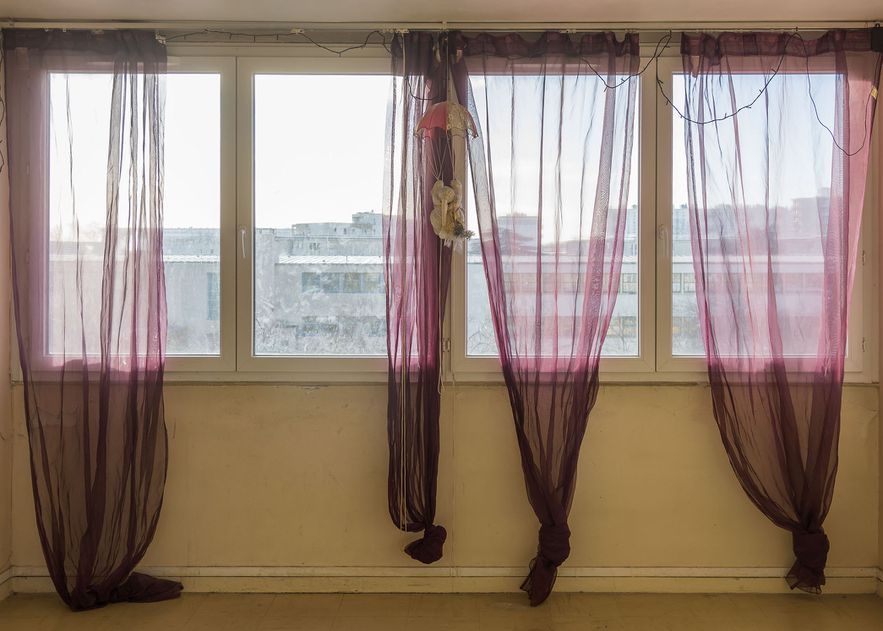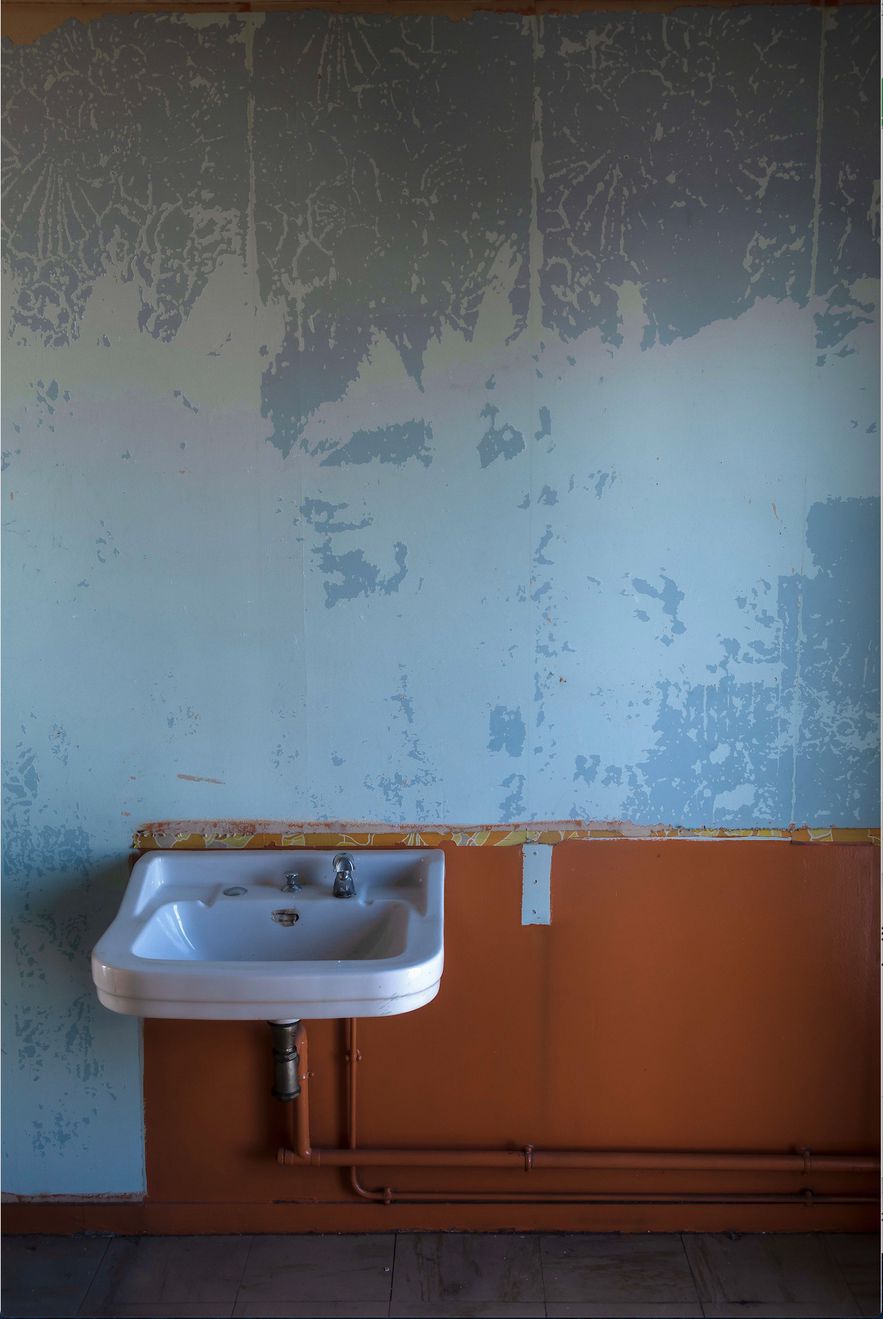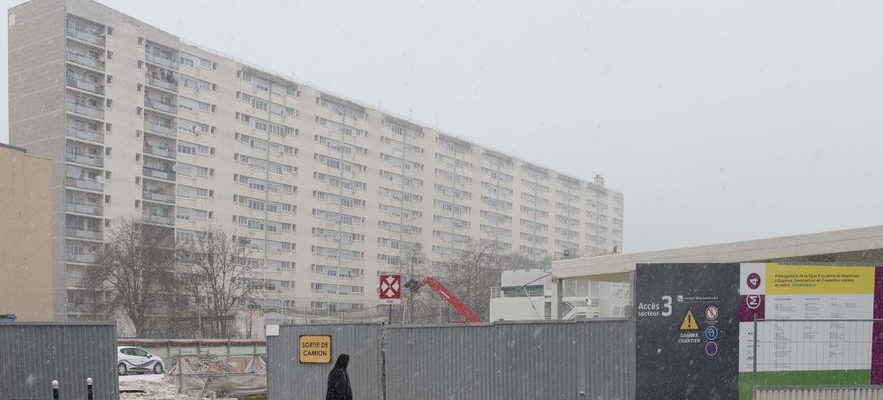“In the building, at the beginning, there were mainly workers. Those from Peugeot, and the Renaults who worked in Billancourt”, recalls Suzy Joubert, historical resident of Pierre-Plate, in Bagneux, in The silent city (Lattès, 2022), the work of Charles Haquet, journalist at L’Express and writer, illustrated by Jean-François Fourmond, professor of Decorative Arts, but also author of photographic projects around disappearance and oblivion. These themes are precisely at the heart of the exhibition hosted by the Orangery of the Senate, in Paris, from June 1 to 12. Twelve short days to discover nearly 200 images captured by the photographer, accompanied by texts by Charles Haquet and podcasts produced by Xavier Jolly from interviews with the inhabitants of “la Pierre”, as everyone calls it here. .
The forgotten are the 1,800 souls of a city which embodied, in the early 1960s, the hope of a better world. Portuguese, West Indians, Moroccans and “Gauls” (French natives) rubbed shoulders there without clashes, civil servants, workers and people from the neighboring petty bourgeoisie on a background of mutual aid. But the whole knew, from the 1980s, the scourge of drug dealers, gangs, AIDS, unemployment. The wealthiest have deserted, and if the cultural mix remains, the social mix has been lost.
“Lucie Aubrac”, 2018.
/ © Jean-Francois Fourmond
Today, in these faded bars, each of which bears the name of a famous composer, the famous “living together” has taken a beating and the gray concrete blocks are aging badly. Delayed for a long time, the question of their rehabilitation has come back in force with Greater Paris, while the metro now serves the “Musicians’ Zac”. Started in 2019, its makeover is still in progress: destruction or renovation of buildings, construction of new housing, development of facilities and green spaces, etc.

“Djamal”, 2020.
/ © Jean-Francois Fourmond
In 2006, the anti-Semitic assassination of Ilan Halimi put the site in the spotlight. But it was not this tragic affair which, in 2018, led Jean-François Fourmond and Charles Haquet, later joined by Xavier Jolly, to take an interest in the place. When they reach La Pierre by bike, it is the feelings of the inhabitants faced with the planned disappearance of their environment that they come to question. For more than three years, they surveyed the city, meeting those who live there, gradually forging strong ties with some: early residents, such as Suzy, Michelle or Rokahya; young people, like Rafik Meftah, specialized educator and seed of filmmaker, whose video A Child of Stone is projected in the Senate; and even alumni, like Dee Nasty, the “father of rap” in France, who grew up here.
We find them on the photographs of Jean-François Fourmond, brought together in particular in a fields against fields, made up of 56 prints of three meters by two, “as close as possible to daily intimacies, without ever giving in to brutal unveiling”, underlines the one who has also captured the traces of life in the floors emptied of their occupants, including a series on the curtains , moving vestiges of a fading world.

“Rossini”, 2019.
/ © Jean-Francois Fourmond
Suzy Joubert, she died in June 2020. Of the one who was a long-term teacher in the neighborhood and linchpin of the associations and collective citizens of the city, remains this snapshot where she poses, pensive, behind the window of her apartment in the Debussy bar, while below are busy cranes and construction trucks. A giant format of photography was also exhibited on the gable end of the building until it was partially demolished a few months ago.

“Washbasin”, 2020.
/ © Jean-Francois Fourmond
Already shown at the Maison des Arts in Bagneux in 2021, then at the Lligat gallery by Valérie Jottreau in Perpignan, on the sidelines of the Visa pour l’image 2022 festival, now enriched at the Orangerie du Sénat, this visual, textual investigation and sound reveals a palette of sensitive portraits, between doubt, hope and nostalgia. A resident attests to this: “You cry twice when you live at La Pierre Plate, the day you get there and the day you leave”.
